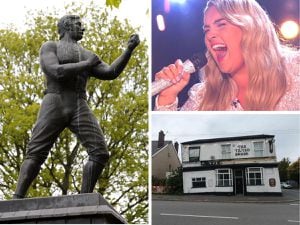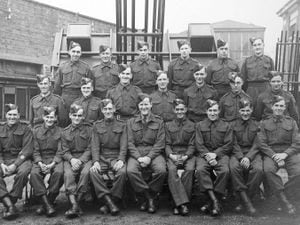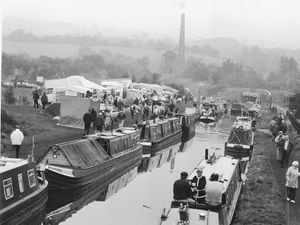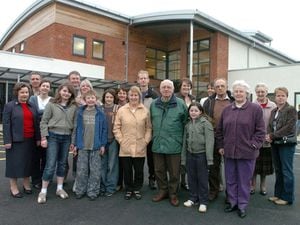Titanic disaster continues to fascinate
Be British!
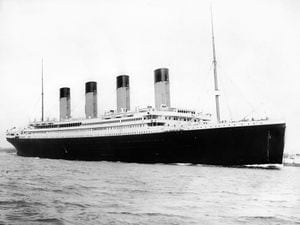
They were the last words of the captain as the Titanic slid beneath the waves.
And as the mighty liner foundered, the band played Nearer, My God, to Thee.
Or maybe none of these things happened. Because the myths and legends surrounding the loss of the Titanic on this day in 1912 began virtually immediately.
There have since been worse sinkings involving greater loss of life, but the fascination with the Titanic endures well over a century later.
The liner hit an iceberg on its maiden trans-Atlantic voyage and sank with the loss of around 1,500 lives. In actual fact, it is probably truer to say that it nearly missed an iceberg, because if it had sailed straight in to it, it is quite possible that the Titanic would have suffered terrible bow damage, but would have remained afloat.
It was the act of being sliced open, fatally compromising the integrity of so many watertight compartments, which proved fatal.
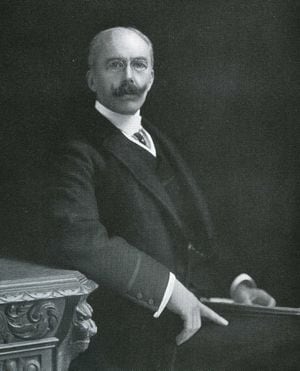
Let's turn the clock back to that time and imagine being an Express and Star reader opening their paper on Monday, April 15, 1912, to receive news which was alarming, but also reassuring.
"According to wireless telegrams," the report read, "the Titanic, the largest liner in the world, which left England last week on her maiden voyage to New York, struck a huge iceberg on Sunday night.
"Latest cablegrams state that the Virginia, which made for the scene of the accident in response to a wireless message, is now standing by the disabled liner, and that there is no danger of loss of life."
It went on to say that all the passengers had left the Titanic by 3.30am and that by late afternoon the stricken liner was slowly making her way towards Halifax.
By way of background, it added that she was the largest vessel afloat, with a tonnage of 46,382, and a length of 882 feet.
Built by the White Star Company, officials at the line "hope it is not so serious as reported, and that later news will show that the earlier reports were exaggerated."
These false reports came from reputable news agencies. But the truth was not long in coming. The following day the full scale of the disaster was outlined under a massive headline – for its day – baldly stating TITANIC SUNK.
With reports putting the number of survivors at 868, it was elementary maths to work out that the death toll was 1,490, and with only slight variations – some put it at over 1,500 – that is a figure to have stood the test of time.
Almost all those saved were women and children, which meant that almost all the men on board were dead.
There could have been many more people saved. But the one thing everybody knows about the Titanic is that there weren't enough lifeboats.
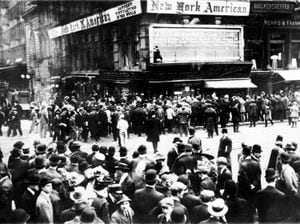
For Southampton, it was a staggering blow as practically every member of the crew lived there.
Many of those on board were prominent figures of the day. An especially tragic aspect of the disaster was the high number of honeymooners or newly-married couples on board.
The ship's commander, Captain Edward Smith, was a Staffordshire man, born in the county in 1850.
As is the case with disasters today, there was a huge public desire to do something to aid the victims, and newspapers including the Express and Star played their part in accepting donations.
Among many offers of help, The Royal Orphanage at Wolverhampton offered to admit 10 children of crew victims from the ship. At the Grand Theatre in Wolverhampton, a special matinee performance was held in aid of the relief fund.
In the immediate aftermath, there was considerable confusion over who had died, who had survived, and who was on board in the first place.
For instance, A Mrs Day, formerly of Penn Road and Codsall Wood, was said to have booked a passage on the Titanic to join her husband in Canada. Mrs Day, of Lower Villiers Street, was with her daughter Mrs Cox, her son-in-law, and other relatives. However, a postcard of the Laurentic (another liner) posted from Liverpool suggested the fears were misplaced – Titanic had sailed from Southampton.
It was reported that among the list of second-class passengers on the Titanic who survived appeared the names of Richard Becker, Allan Becker, Miss Ruth Becker, and Miss Mary Becker.
"Mr and Mrs Becker, who up to recently lived in Haygate Road, Wellington, Mr Becker being connected with the Picture Palace on Tan Bank, left Shropshire with the intention of returning to America, but an Express and Star representative failed to obtain confirmatory evidence this morning that the Becker family referred to included the former residents of Wellington.
"Further inquiries go to show that Mr Becker, said to have sailed on the Titanic, is reported as still at Plymouth.
"Mr and Mrs Griffiths and three sons, of Southall's Bank, Dawley, left the district ten days ago to join the Titanic at Southampton, as emigrants for American. Their friends at Dawley are much concerned as to their fate.
"A son of Mr and Mrs Speed, of Crudgington, was also an emigrant on the Titanic, and it is feared he is among the drowned."
The second officer, Lieutenant William Murdock, was a cousin of a Stourbridge clergyman, the Rev Dr Ewart.
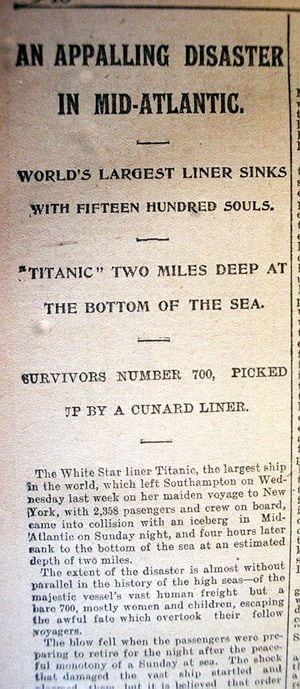
And what was the fate of one of the stewards, James Richard Dinenage, the son of Mr and Mrs Dinenage of Bloxwich Road, Walsall? It was his first trip on a White Star liner.
As survivors finally made it to land, the pressmen were waiting, and first hand accounts of the final moments of the liner, some of them lurid, began to emerge.
The Captain, some survivors said, had shot himself as he stood on the bridge, and the chief engineer did likewise.
"Further reports stated that following the collision there were wild scenes of panic on board, and that men fought like madmen among each other to escape the fate that awaited so many of the passengers and crew.
"It is stated that several men were shot dead by the officers," reported the Express and Star.
Specifically, it was said that three Italians were shot dead in the struggle for the lifeboats.
A rush of steerage passengers (that is, the ones paying lowest fares) to the lifeboats was halted by officers with revolvers.
Yet as the Titanic went down, the band was playing.
Some of these accounts were quickly shown to be well wide of the mark and, far from having shot himself, Captain Smith was soon lauded for his "unparalleled self sacrifice and heroism," a man who stayed at his post and shortly before being literally washed away called through his megaphone to the mass below "Be British!"
There is a statue to him in Lichfield.
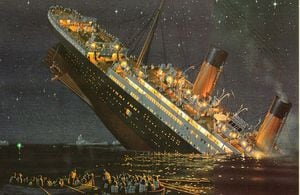
As for the band, the bandsmen were said to have played to the end, with lively music at first and then as the ship sank, Nearer, My God, to Thee.
Confirmed local victims? There was Christopher Head, the second husband of Ethel, of the Chapman family, whose family home was at Kilhendre Hall at Dudleston, Ellesmere.
Five people from West Bromwich perished, including cellist Wesley Woodward, from Hill Top, who played in one of the ship's three orchestras.
Among others were William Hipkins, the managing director of Smethwick-based scales manufacturer W.T. Avery, and Leopold Turner, of Church Stretton, who was a second steward killed on his 28th birthday.
The last remaining survivor of the disaster, Millvina Dean, died on May 31, 2009, aged 97. She was two months old at the time of the sinking.
The Titanic lives on in surprising ways. On that maiden voyage, guests had Shropshire sausage on the menu, made to a local recipe. The recipe was revived a few years ago by a butcher near Bridgnorth who won an award for it.
And it continues to capture the imagination. One Shropshire couple had their wedding in 2002 on a Titanic theme, the many touches including a wedding cake looking like the liner.
There have been books and films aplenty, some more successful than others. The 1997 movie with Kate Winslet and Leonardo DiCaprio was the most expensive film ever made, and won 11 Oscars.
From time to time there have been schemes to raise the Titanic, an enormous technical challenge to say the least and in any event enthusiasm has considerably diminished since the wreck was found on the sea bed in 1985 and found to be broken up.
There was a 1980 movie called "Raise the Titanic," a notoriously expensive flop which gave rise to a famous quote from producer Sir Lew Grade, who commented: "It would have been cheaper to lower the Atlantic."


